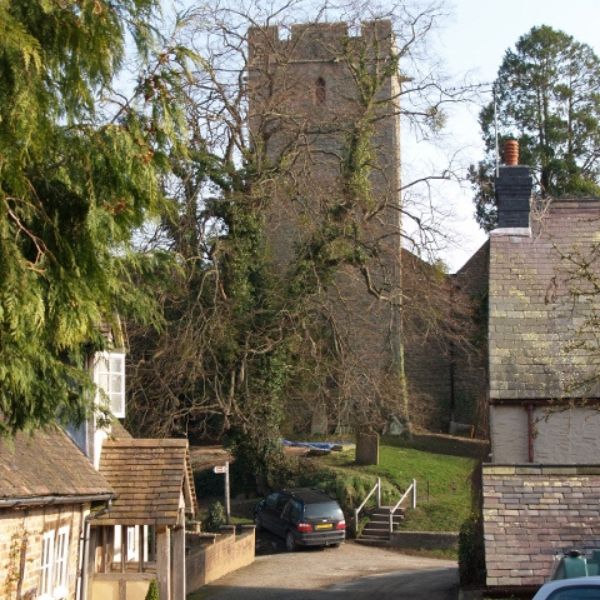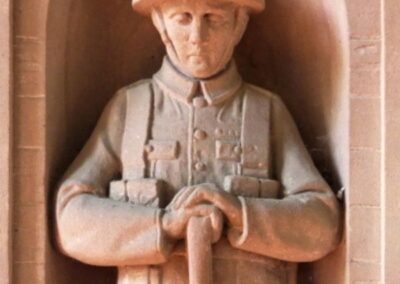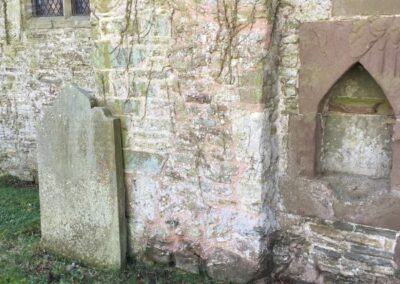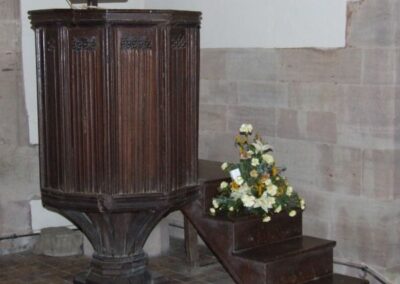St James was built by the famous Mortimer family in the 11th century. On the site of an earlier Saxon building, the shape and design of the churchyard would imply an earlier foundation, possibly late Celtic.
Having undergone few structural changes over the centuries, many important architectural features remain, including a very early Norman nave, with opus spicatum ‘herringbone’ masonry exposed internally at viewing level, a rare 14th century piscina, a double sedilia and arched windows.
The 14th Century tower houses functional bells donated in 1721 by Robert Harley, Earl of Oxford. There is also a set of Ellacombe Chimes which enables one person to ring all 6 bells. An unusual wrought-iron ‘side by side birdcage’ clock, circa 1670-1790 is also housed in the tower. A landmark gilded cockerel weathervane adorns the tower roof.
There are examples of 15th century roofing and windows. An early 16th century decagonal pulpit, and the layout of the choir stalls reflects the later influence of Puritanism. The Rev Alexander Clogie (d. 1698) is laid to rest behind the altar – his book ‘Vox Corvii’ is still in print.
Victorian additions include glazing, new ceiling timbers and family monuments to the Kevill-Davies family who temporarily owned nearby Croft Castle. Also during this period underfloor heating similar to that of the Roman hypercaust was installed, albeit unsuccessfully.
Designed and sculpted by William Storr-Barber, a Quaker who was well known for his depiction of soldiers in their later years rather than being youthful, the Wigmore war memorial commemorating those lost in WWI is particularly striking, and unusually housed inside the church.
Paperwork requesting closure of this church has been submitted and the future of this historic church building is uncertain. It is recommended that you visit it while you are still able to!
Location
Church Street
Wigmore
HR6 9UE
- Open 10 a.m. until dusk daily.
- The tower can be accessed by arrangement and from the top affords interesting aerial views of the medieval village layout and the surrounding countryside.
- A limited selection of Church registers is available on site on request, with more – complete from 1572 – housed at the Hereford archive centre. A book telling the stories of those who were killed in action in WW1 is on display.
- Toilets and parking at the Village Hall
- Drinks and snacks at the Village Shop
- Meals at the Oak pub/restaurant.
- Check for individual opening hours.




